There’s a good chance that when you first got interested in resin pouring and casting, you were drawn in by some of the beautiful colors of some of the projects you saw. Have you tried coloring resin yet? Do you have a favorite way to dye resin?
I’m Stephanie from Crafting in the Rain, and I tried six different ways to color resin and I’m excited to show you my results! I’m hoping that you’ll learn something new, and be inspired by one of these ways of how to color resin.
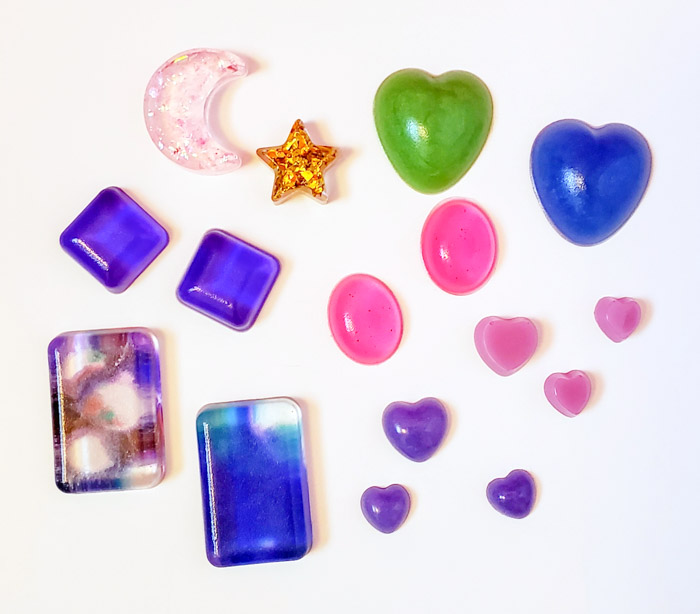
Reasons to color resin
Using resin in its clear and colorless form has some fabulous uses. You can use it to embed shells, flowers, beads, gems, candy and more in things like pendants and coasters. But a lot of times you’ll want to add color to your resin. Colored resin works great for jewelry, game pieces, charms, and drawer knobs, to name a few.
Things that can be used to color resin
There are many options when it comes to dying resin. I have chosen a few pretty common ones, and some you may already have in your craft supplies.
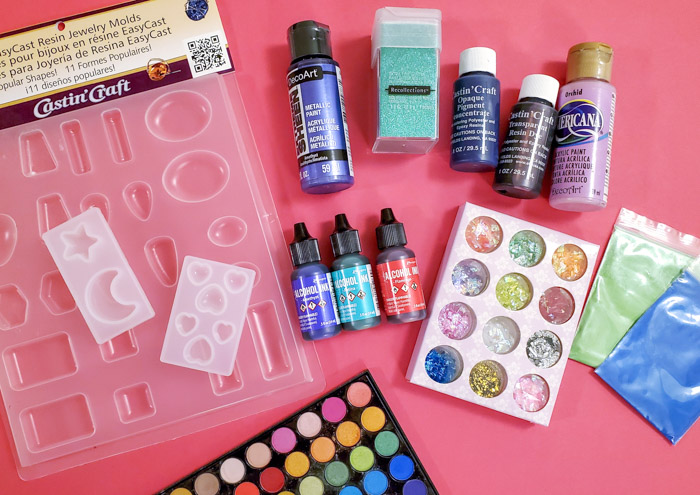
Resin dye
Resin dyes can be found in transparent or opaque pigments and powders. A transparent dye will give the resin color, but light will still pass through the casting.
An opaque pigment will color the resin and little to no light will pass through the resin. You can experiment with mixing custom colors.
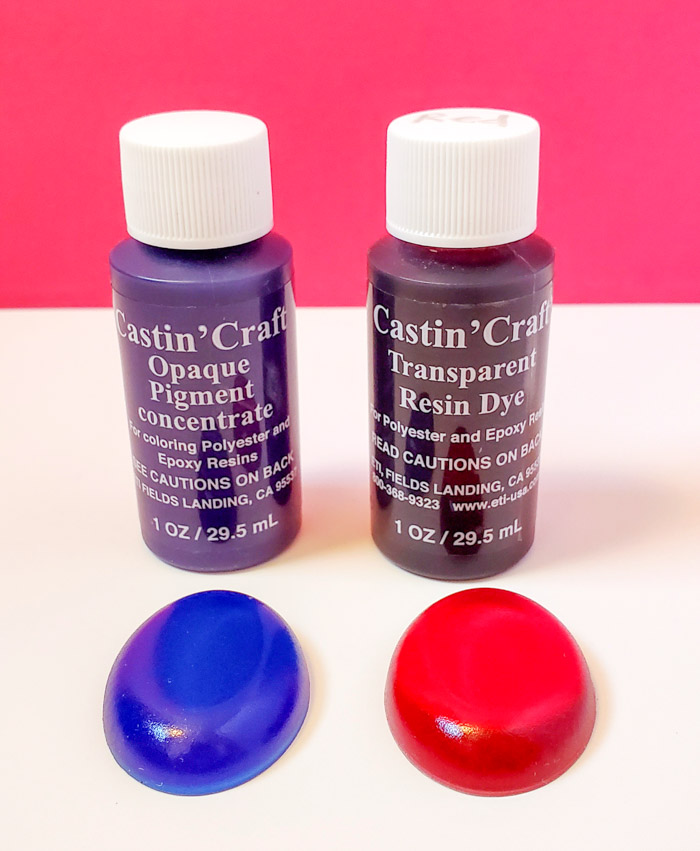
Mica Resin Powder
The powder mixes into the resin very thoroughly to give consistent color. You can see how there is a bit of shimmer even when the resin has cured. After pouring the resin, I gave it a swirl with a toothpick, and it remained as it cured to be visible in the final result.
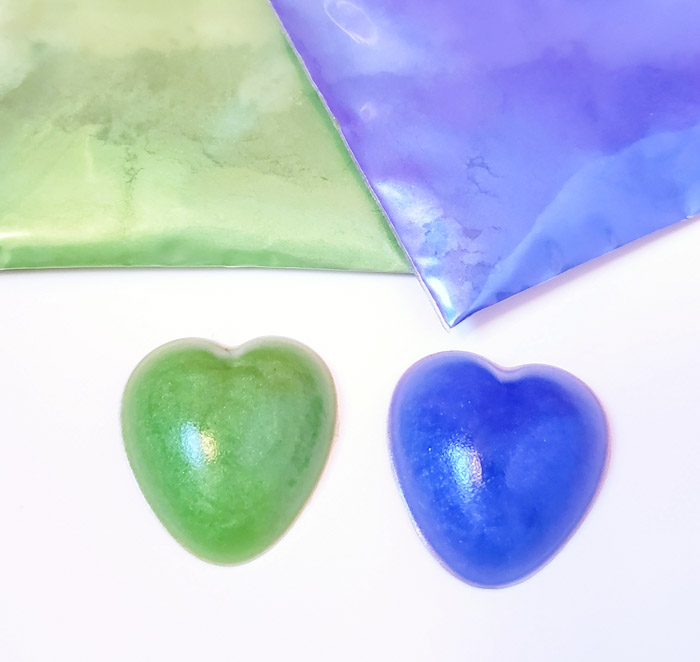
Eye shadow
As you might expect, eye shadow will be very similar to mica powders. I scraped a bit of eye shadow into a powder and added it to the resin.
However, I found that it didn’t mix in completely. Some of the color stayed clumped together, and the flecks are noticeable in the end. Not my favorite result.
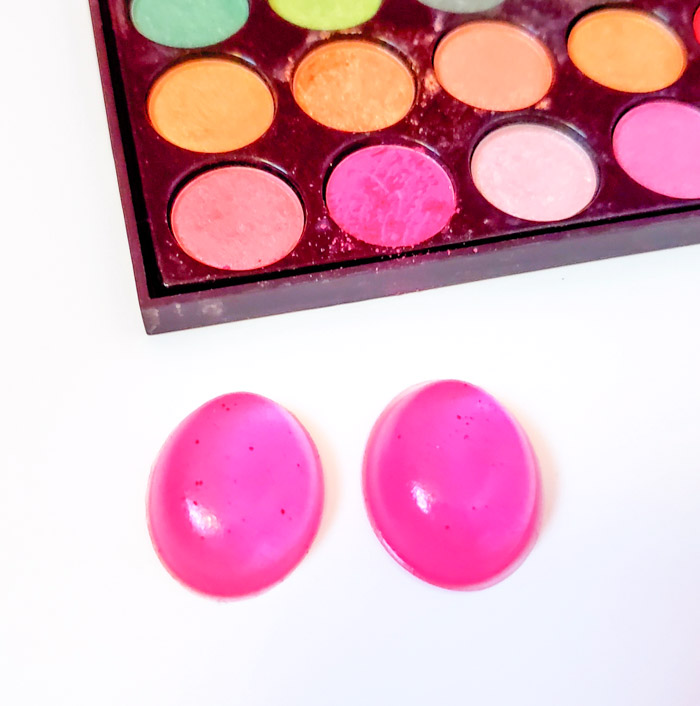
Alcohol ink
Alcohol inks are highly pigmented, alcohol-based inks that are waterproof and will stick to most hard surfaces. As long as they are used sparingly, they don’t compromise the curing of the resin, so they can be mixed in completely or dropped on the surface.
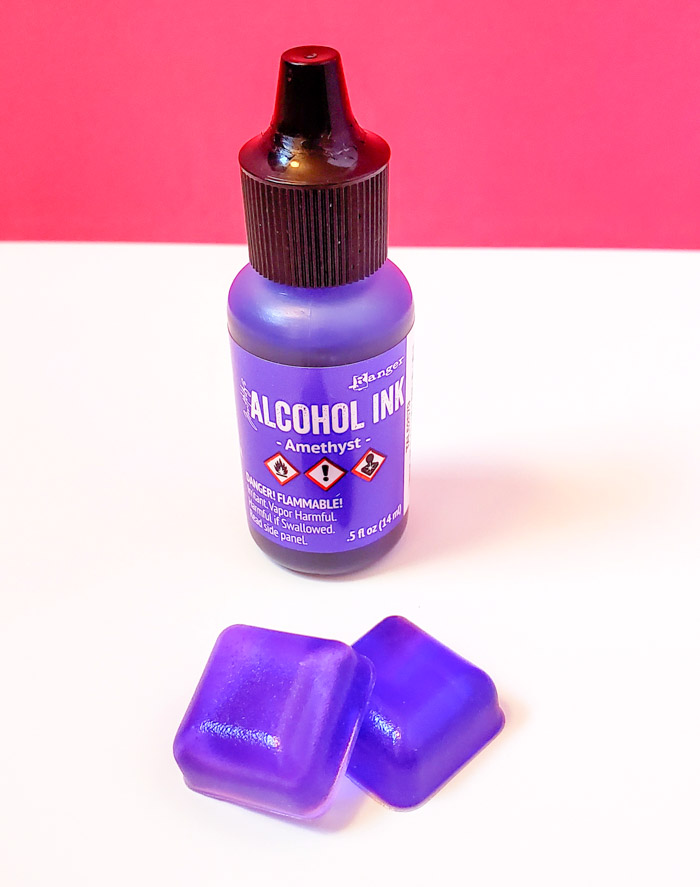
Ink drops can also be added as a top layer, after a resin piece has cured.
In these two examples, I added alcohol ink drops to the resin right after it was poured into the mold. This is what you see looking through the top of the pieces now that they’re out of the mold.
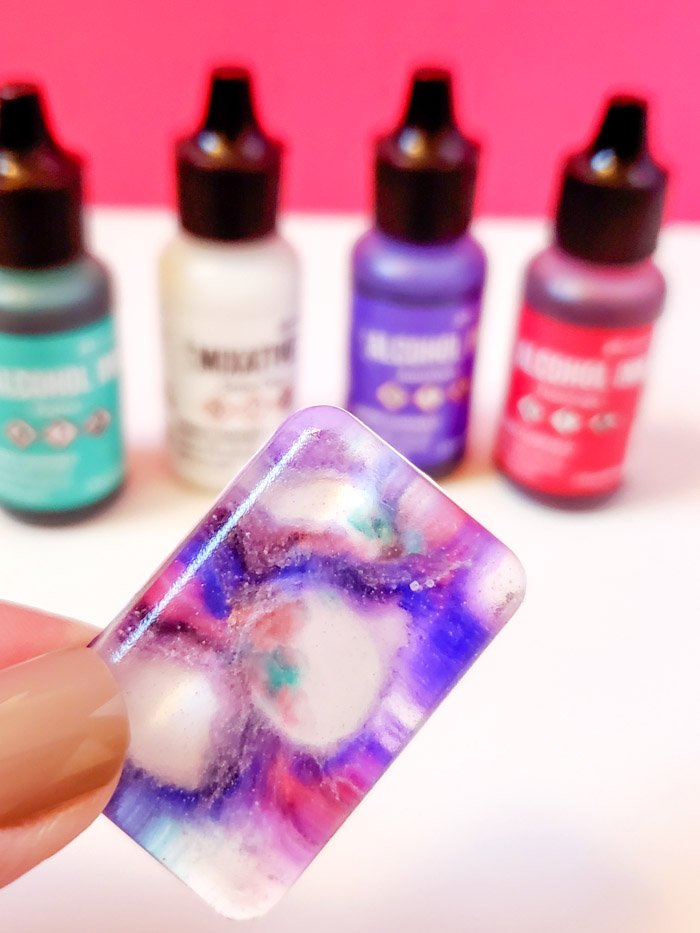
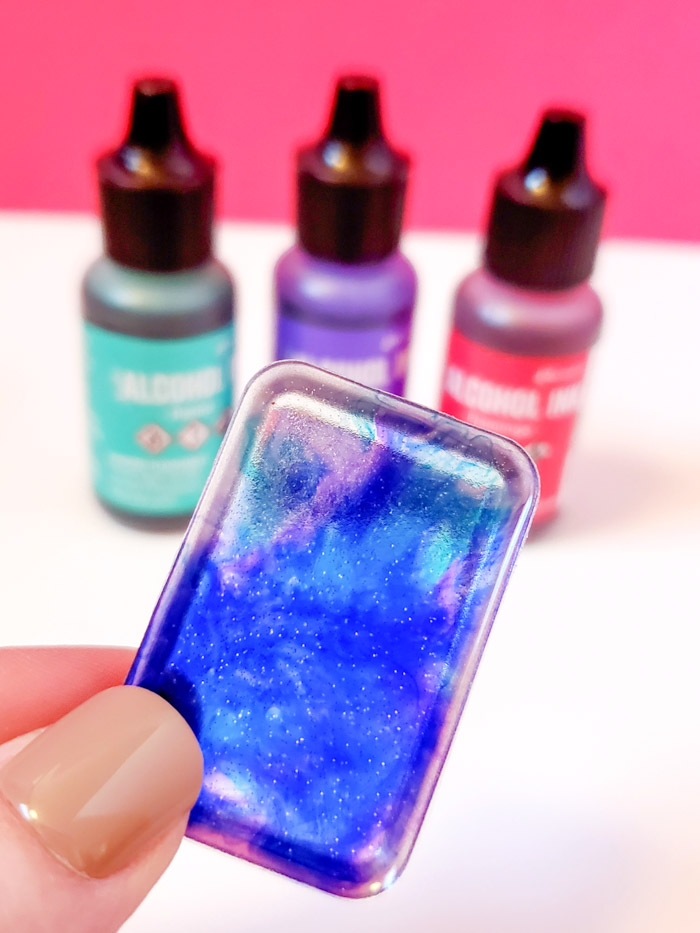
Acrylic paint
Acrylic paint can also be used to dye resin. Usually, a higher quality paint will produce better results. The casting on the left is colored with a shimmer “color shift” paint and the one on the right is regular. Tread carefully with this method as too much paint can affect the curing of your project.
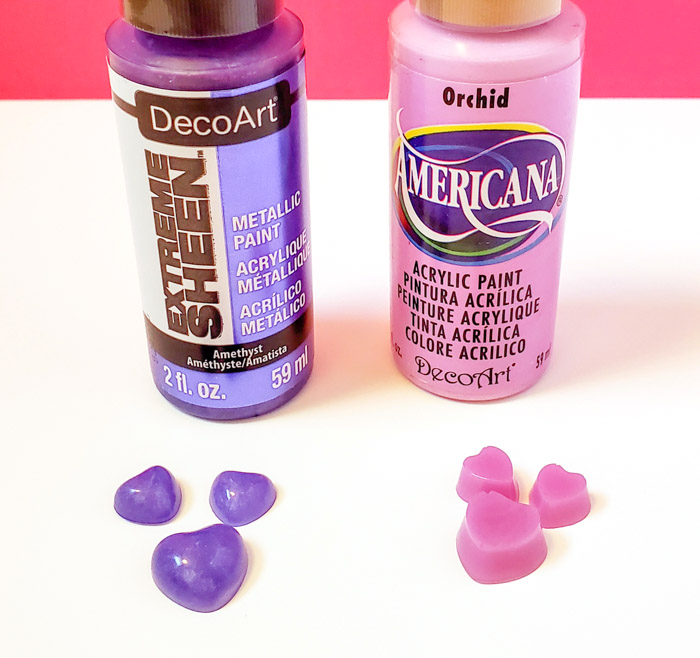
They both take the color well, and the shimmer finish on the left is quite pretty.
Glitter
Glitter doesn’t technically change the color of the resin. But it can definitely change the look.
Fine glitter has a better chance of staying more suspended through the resin, while heavier glitter pieces will sink as the resin cures.
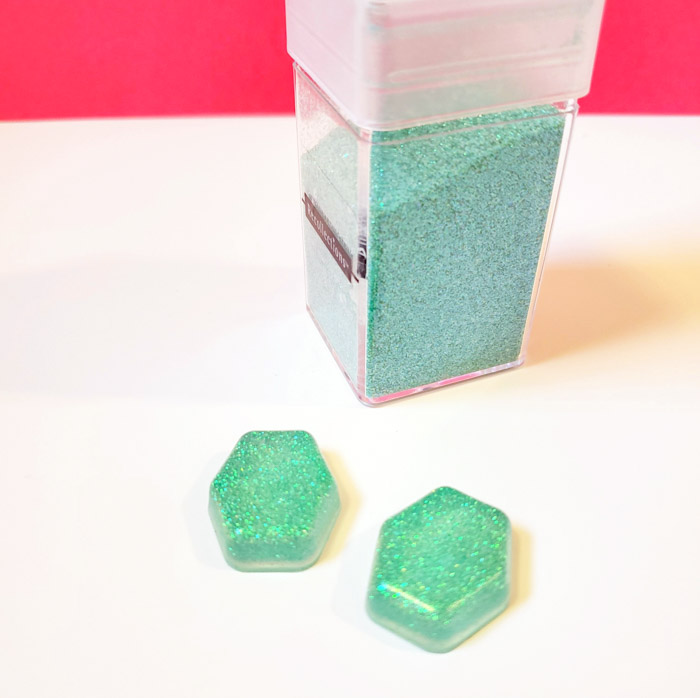
These glitter flakes mostly sink, (so end up on the top as you pop a shape out of a mold) but they still create a lot of reflection in the finished piece.
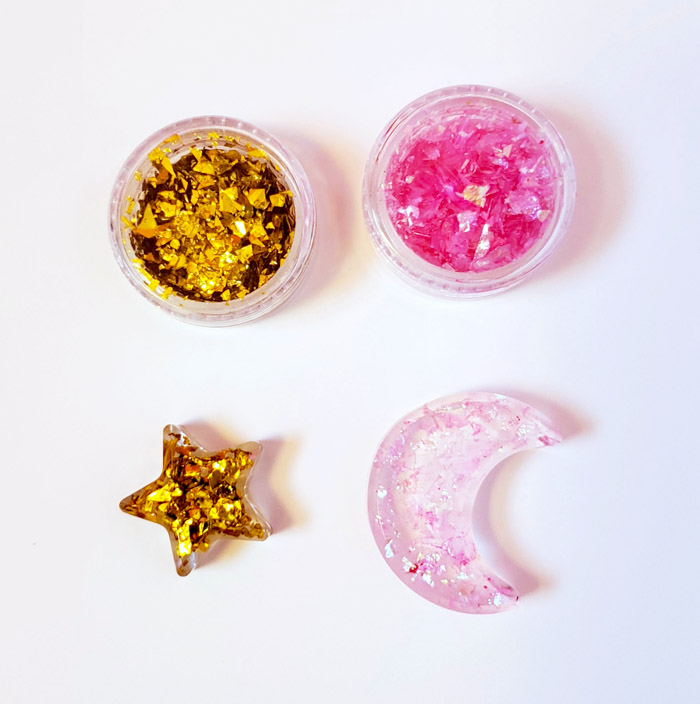
Aren’t these all so pretty?! Which one is your favorite? We’d love to hear what you want to try next!
There are a couple of things to remember.
- Always try to start out with the least amount of colorant as you can. (The exception: Fine glitter! Add a good amount of it!)
One sprinkle. One drop. Add more as needed, but this way you will increase the chances of not disrupting the curing process. A good rule of thumb is don’t ever exceed 5% of your total project’s volume with additives. - Any dye that doesn’t match the brand of resin you are using may produce unexpected results. Curing can be affected, or it may turn a different color.
If you’re going to be working on a piece that you really don’t want to mess up, it’s always a good idea to run a small test pour first to see if you get the results you’re hoping for.
Stephanie is a crafty wife and mom living in the Pacific Northwest. She shares her creative ideas -along with a bit of “making it up as she goes” – on her blog, Crafting in the Rain.
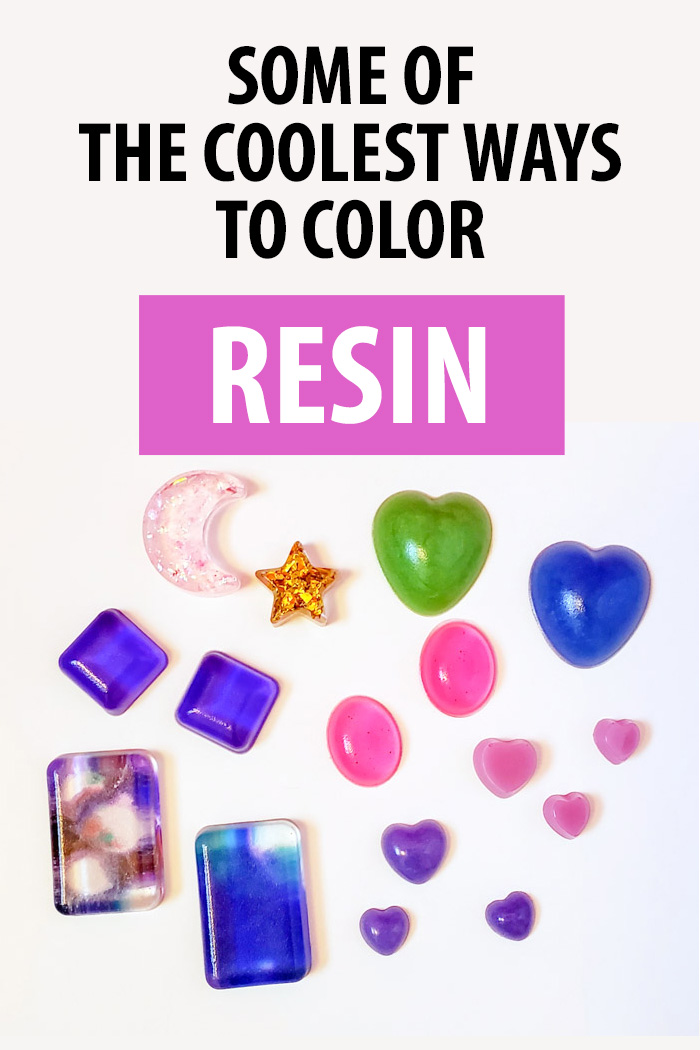



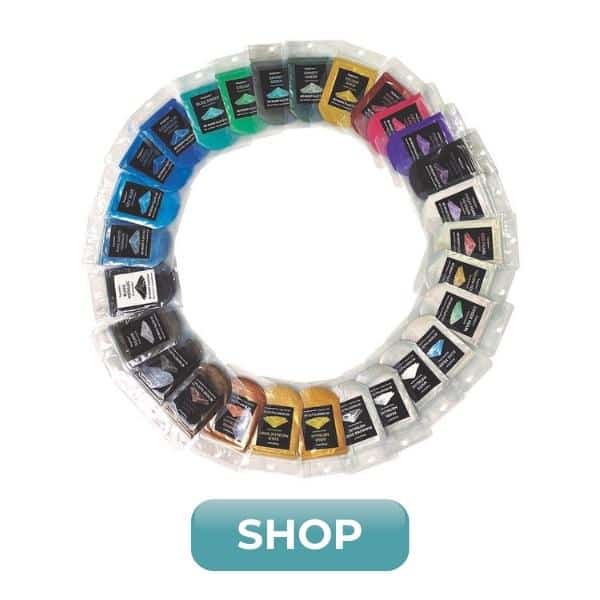

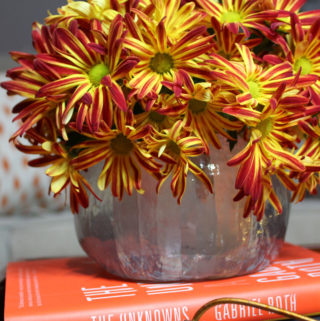
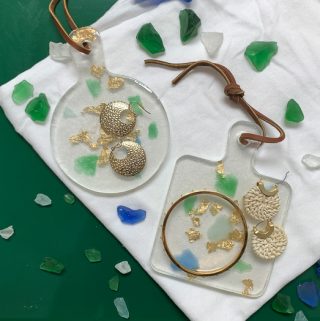
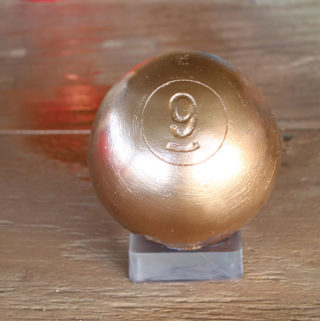
Great tips to know and use when I start using color in my resin. Will the acrylic bought at the dollar store a good one to use?
Yvonne
It’s worth a try for sure! Some of the cheaper brands of paint may have a higher water to pigment ratio in the paint. This could have an affect on the resin, but likely not when adding a small amount. Let us know your result!
As always your posting is full of great information.
Great tips! Thank you. Here is one for you. When using ink, for every drop of color put a drop of white on top of it for about 3-6 layers, use 2-5 colors depending on the size of the project. Just make sure if the colors overlap go together and don’t become muddy. 😉😊
Great tip, thanks for sharing!
used tom paint silk scarves, have dyes left can I use them in resin?
What kind of dyes? The methods we list here are the only methods we can recommend for certain.
Thank you for taking the time and energy for testing and blogging! I am buying my first bottles of resin soon as a first time resin experience and this article was extremely helpful as I do not have a lot of $ to spend at this time! Im looking forward to trying your methods bc I have a ton of coloring alternatives at home!
Hi Stephanie,
I’m doing a diorama with a river in it. In a video I saw the guy used an opaque resin dye for his river tint, but I couldn’t find the colors I wanted in the opaque form at my local craft store, so I got these transparent resin dyes that had the colors I was looking for. I will paint a darker color along the deepest parts of the river to show depth and then blend in some lighter color as the river becomes more shallow. There will be some smaller rocks and boulders below the river surface in spots. So if I use a transparent resin dye will the painted surface below the river be more visible versus using the opaque resin dye? I’m not trying to highlight the painted surface too much
Hi Jeff,
Yes, if you want to see the elements in the surface below you would want to use transparent resin dye. A little goes a long way!